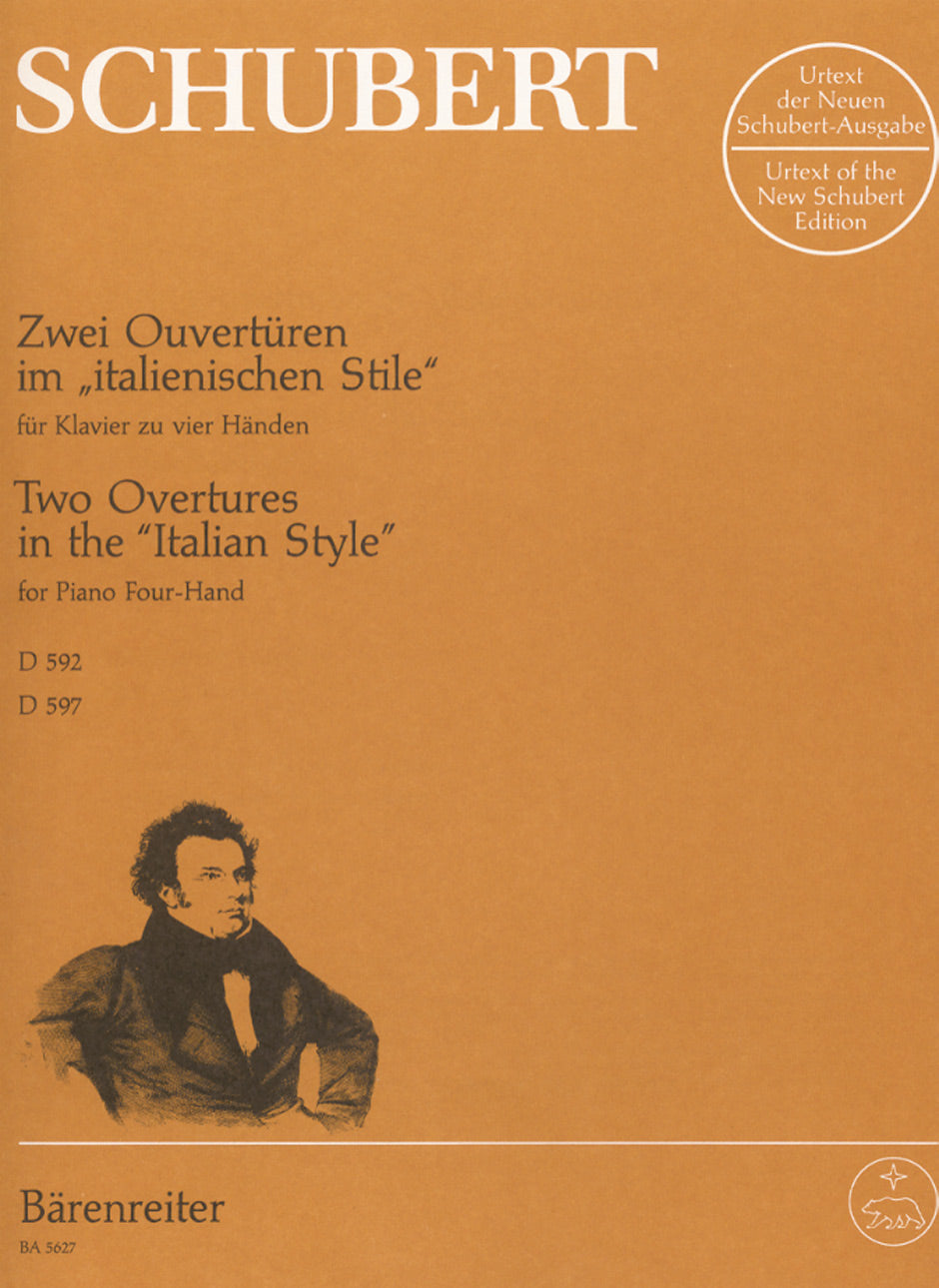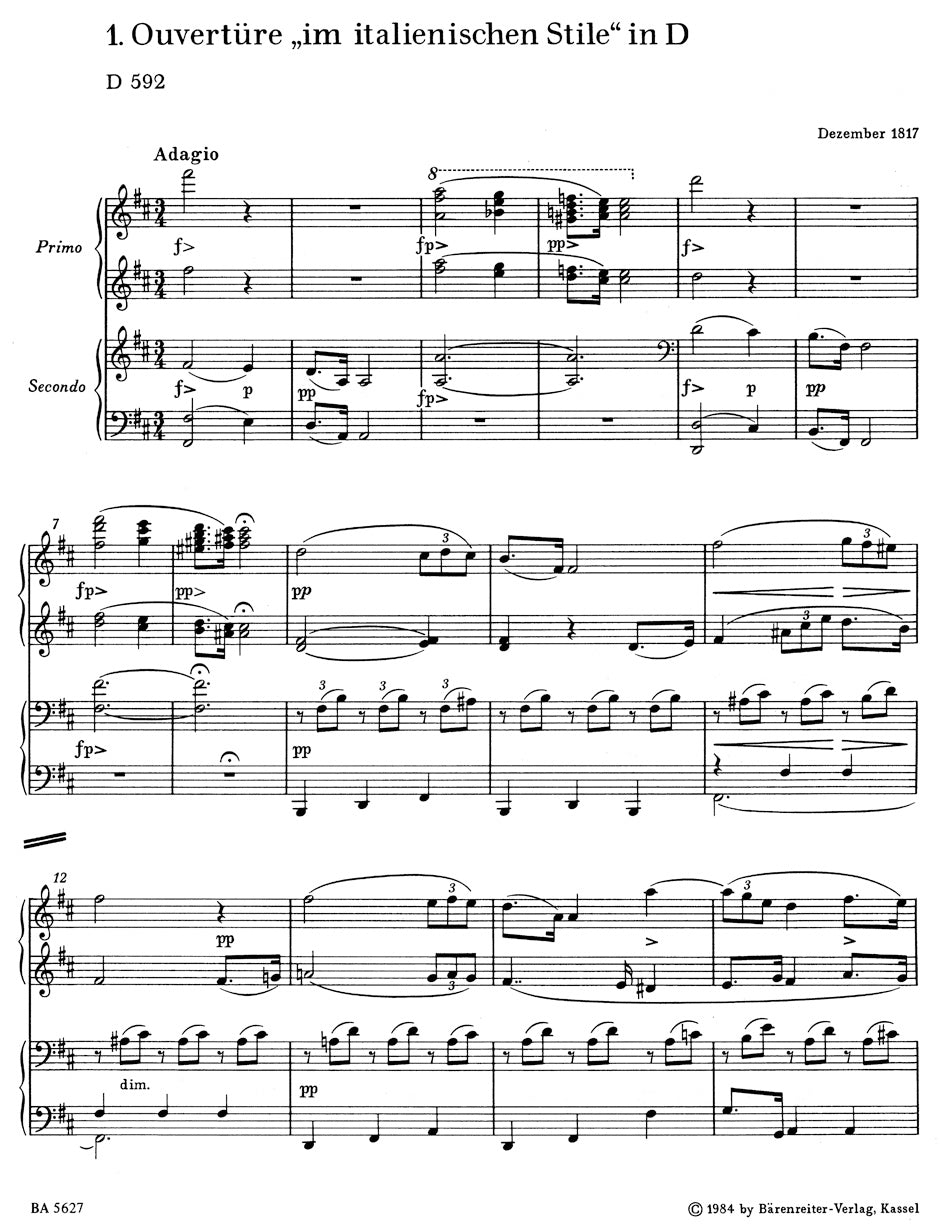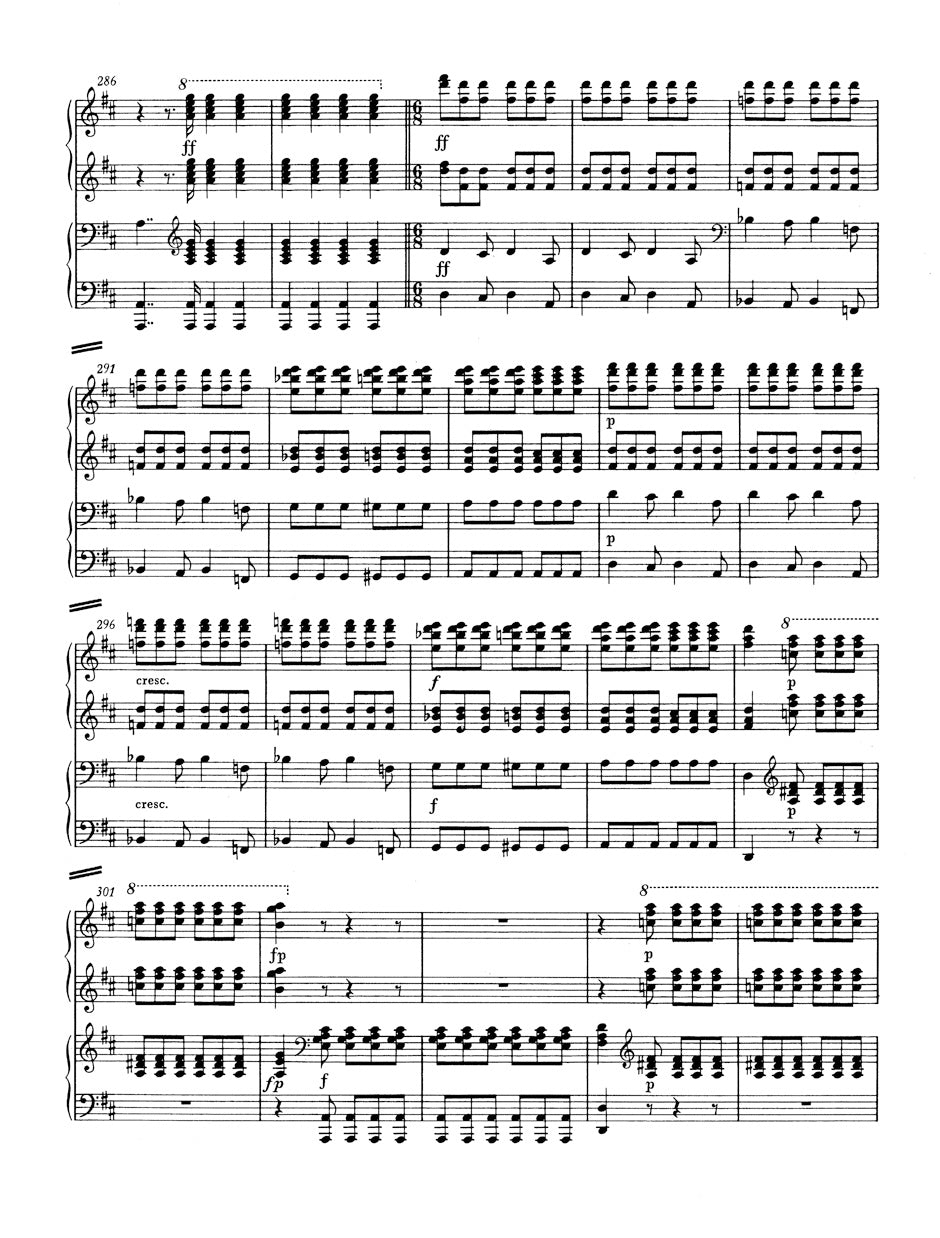Schubert: Two Overtures in "Italian Style", D 592 and 597
In stock and typically ships within 1 business day.
- Composer: Franz Schubert (1797-1828)
- Editor: Walburga Litschauer
- Instrumentation: Piano 4-Hands
- ISMN:
- Size: 9.1 x 11.8 inches
- Pages: 36
- Urtext / Critical Edition
Description
It was under the influence of Rossini, whose operas enjoyed great popularity in Vienna, that Schubert in November 1817 wrote two orchestral overtures "in the Italy style" (D 590 and D 591).
According to Schubert's first biographer, Heinrich Kreissle, these pieces owe their existence to a musical wager. The composer had attended a performance of Rossini's opera "Tancredi", the overture of which was praised to the skies by his friends. "Doubtless finding these laudations excessive, Schubert was roused to a spirit of contradiction and declared that he would have no difficulty writing overtures of this sort in a similar style within the briefest span of time. His companions took him at his word and vowed, for their parts, to reward the deed with a glass of good wine. Schubert set to work immediately and composed an overture for orchestra, followed soon thereafter by a second. Both works came to be known by the name "Overtures in the Italian Style" and were roundly applauded in concerts during his lifetime".
Shortly after finishing the orchestral versions Schubert arranged his two "Italian overtures" for piano four-hands.
The present edition adheres to the editorial principles set down for the "Neue Schubert-Ausgabe".
Works:
- Overture in the "Italian Style" No. 1, D 592
- Overture in the "Italian Style" No. 2, D 597
Publishers use a lot of words to describe what they sell, and we know it can be confusing. We've tried to be as clear as possible to make sure you get exactly what you are looking for. Below are descriptions of the terms that we use to describe the various formats that music often comes in.
Choral Score
A score for vocalists that only contains the vocal lines. The instrumental parts are not there for reference. Generally, cheaper than a vocal score and requires multiple copies for purchase.
Facsimile
Reproductions of the original hand-written scores from the composer.
Full Score
For ensemble music, this indicates that the edition contains all parts on a single system (there are not separate parts for each player). In larger ensembles, this is for the conductor.
Hardcover
Hardbound. Generally either linen-covered or half-leather.
Orchestral Parts
Similar to a wind set, this is a collection of parts. In the case of strings, the numbers listed are the number of copies included, though generally these are available individually (often with minimum quantities required).
Paperback
When publishers offer multiple bindings (e.g. hardcover) or study scores, this is the "standard" version. If you're planning to play the music, this is probably what you want.
Performance / Playing Score
A score of the music containing all parts on one system, intended for players to share. There are not separate parts for each player.
Set of Parts
For ensemble music, this indicates that there are separate individual parts for each player.
Solo Part with Piano Reduction
For solo pieces with orchestra, this is a version that contains a piano reduction of the orchestra parts. For piano pieces, two copies are typically needed for performance.
Study Score
A small (think choral size) copy of the complete score meant for studying, and not playing. They make great add-ons when learning concertos and small chamber works.
Vocal Score
A score prepared for vocalists that includes the piano/organ part or a reduction of the instrumental parts.
Wind Set
For orchestral music, this is a collection of wind and percussion parts. The specific quantities of each instrument are notated.
With Audio
In addition to the printed music, the edition contains recordings of the pieces. This may be an included CD, or access to files on the internet.
With / Without Fingering (Markings)
Some publishers prepare two copies - a pure Urtext edition that includes no fingering (or bowing) suggestions and a lightly edited version that includes a minimal number of editorial markings.





